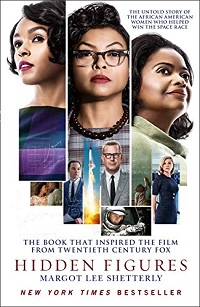Sponsored by Flatiron Books publisher of OLGA DIES DREAMING by Xochitl Gonzalez
A blazing talent debuts with the tale of a status-driven wedding planner grappling with her social ambitions, absent mother, and Puerto Rican roots—all in the wake of Hurricane Maria.
Welcome to Read This Book, a newsletter where I recommend one book that should absolutely be put at the top of your TBR pile. Recommended books will vary across genre and age category and include shiny new books, older books you may have missed, and some classics I suggest finally getting around to.
Before we get into today’s book, don’t forget to check out our new line of bookish, Wordle-inspired merch! There are mugs, t-shirts, hoodies, and more. The campaign is temporary, so order yours now! Make space for another pile of books on your floor because here we go!
Make sure to get your own Read Harder Book Journal from Book Riot to track your reading for the year!
Today’s pick was adapted into film a few years ago starring Taraji P. Henson, Octavia Butler, and Janelle Monáe.

Hidden Figures: The American Dream and the Untold Story of the Black Women Mathematicians Who Helped Win the Space Race by Margot Lee Shetterly
Shetterly grew up in Virginia and her father worked for NASA. Hidden Figures is nonfiction about the African American women who worked for the National Advisory Committee for Aeronautics (NACA) which eventually morphed, with other groups, into the National Aeronautics & Space Administration (NASA). While the film version concentrates on NASA, and a few women, the truth is that African American women started working at NACA during WWII. It was only supposed to be a short commitment, but then it turned into so much more. The women started as mathematicians, or as they were called, “computers.” There was East Computing, where the white women computers were, and there was West Computing, which had the African American women.
I thought the book was better than the movie (and I liked the movie). The book offers so much more context and gravitas to what these women were achieving, especially during segregation, the Jim Crow Era, and the Civil Rights Movement. Shetterly points out how the racism in the U.S. was damaging (and still damages) how other countries viewed (and view) the U.S. and questioned the U.S. as a global superpower when our own citizens were not being treated fairly. It really lays bare the hypocrisy of opposing the treatment of Jewish people in Europe while here at home, our own citizens weren’t being afforded basic human rights.
I had no idea how incredibly significant the West computers were not only at NACA, then NASA, but as part of U.S. history. They not only were integral in aeronautics and the space race, but in integration as well. In addition to Katherine Johnson, we read about Dorothy Vaughan, who paved the way, and Mary Jackson, who went from computer to engineer, which was rare for African American women, especially at that time. The book also teaches us about so many more of the women and a handful of the African American men that we never hear about in the history books.
Don’t forget you can get three free audiobooks at Audiobooks.com with a free trial!
That’s it for now, book-lovers!
Patricia
Find me on Book Riot, the All the Books podcast, and Twitter.
Find more books by subscribing to Book Riot Newsletters.
